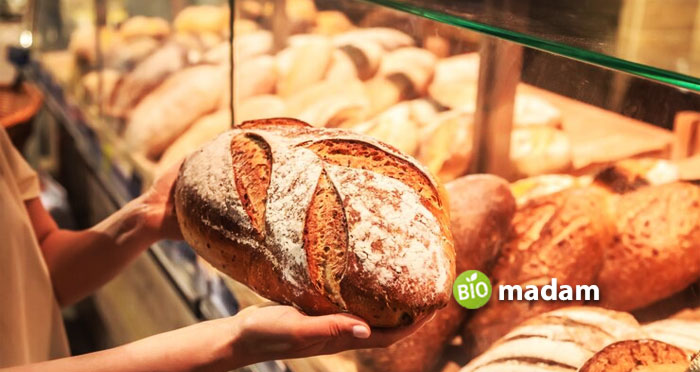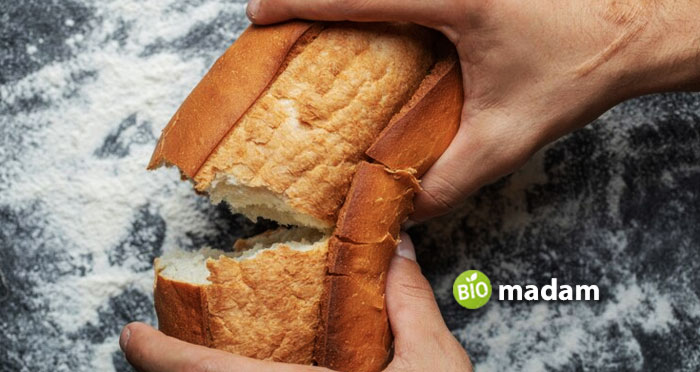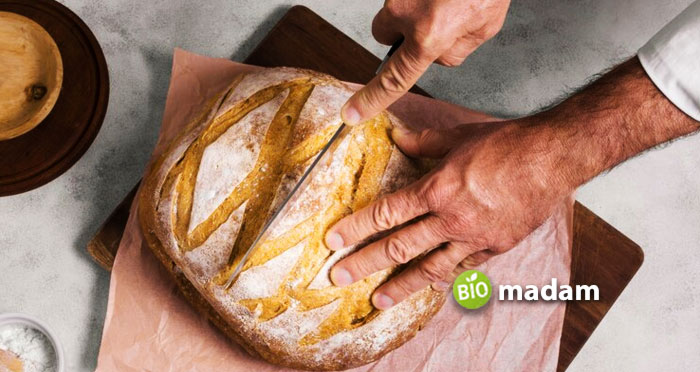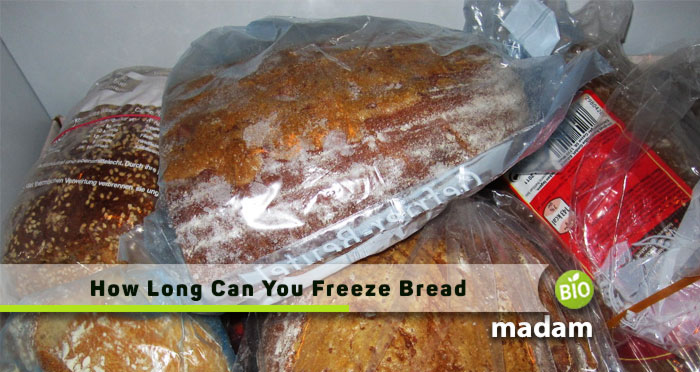Bread is a staple food for many, but it also tends to go stale quickly. Freezing bread is an easy way to extend its shelf life and prevent waste. But how long can bread safely stay frozen before it loses quality?
In this article, we’ll explore how freezing affects bread and provide guidelines on the maximum recommended freezer times for different types of bread. We’ll also offer tips on proper freezing and thawing techniques to help you get the most out of your frozen loaves.
With the right strategies, you can enjoy fresh-tasting bread for months after freezing it. Read on to become a freezer bread pro and reduce your food waste!
Can You Freeze Bread?
The first question that often comes to mind is whether bread can be frozen. The answer is a loud yes. Freezing bread is an effective way to prevent it from going stale and reduce food waste. But can you freeze bread in its original packaging? Let us look into it as well:
Can You Freeze Bread in Original Packaging?
Yes, you can freeze store-bought bread in its original packaging if the plastic is airtight, which many manufacturers provide for the convenience of consumers. This method can keep bread fresh for about two to three weeks. However, it’s essential to note that freezing bread in its original packaging may impact its texture and taste. Understanding these changes is crucial for making informed decisions about the storage of your bread. If the original packaging is not airtight, consider transferring the bread to a suitable freezer bag or wrapping it tightly in plastic before freezing.
Freezer Duration Guidelines
Understanding how long can bread be frozen is crucial for maintaining its quality and freshness. Here are the common questions people are really concerned about:

How Long Does Bread Last in the Fridge?
When it comes to refrigerating bread, it’s essential to strike a balance between preserving freshness and avoiding premature staleness. According to the USDA, commercially baked breads and rolls can last 7–14 days in the refrigerator. Breads containing ingredients like meat or hard-cooked eggs should be promptly refrigerated within two hours of preparation.
- While bread won’t mold as quickly in the fridge as it would on the counter, it is susceptible to drying out.
- Generally, bread can last 2–4 days at room temperature.
- Homemade bread typically maintains its freshness for 3–4 days at room temperature.
- Store-bought bread can last up to 7 days at room temperature.
- Refrigeration can significantly increase the shelf life of both commercial and homemade bread.
- Refrigeration adds an extra 3–5 days to the longevity of bread, preserving its freshness and edibility.
How Long Does Bread Last in the Freezer?
For those seeking a longer storage solution, freezing bread is a viable option. Bread can retain its quality in the freezer for up to three months. However, some experts suggest that the optimal consumption period for most frozen bread is within 3–6 months. Beyond this timeframe, bread may start to experience subtle changes in taste and texture or develop freezer burn.
How to Freeze Bread
Properly freezing bread ensures that it can be enjoyed at a later date without compromising its taste and texture. Here’s a step-by-step guide on the best way to freeze bread:
Choose the Right Storage Option
Opt for airtight containers, plastic freezer bags, or aluminum foil, providing a strong barrier against air and moisture to prevent freezer burn.
Airtight Packaging to Prevent Freezer Burn
Wrap slices or the loaf tightly in plastic, place it in a freezer bag, squeeze out excess air, and seal for optimal freshness.
Considerations for Slicing
Slice before freezing for easy portioning. Separate slices with parchment paper to prevent sticking.

Labeling and Dating
Clearly label with the date of freezing and specifics to track shelf life.
Freeze as Soon as Possible
Promptly freeze after purchase or baking to lock in freshness, avoiding prolonged exposure to room temperature.
Utilize Freezer-Friendly Containers
Choose containers designed for freezers, tightly sealed to prevent air entry.
Maximize Freezer Space
Lay flat for efficient storage, rearrange items once frozen.
Thawing Methods
Thaw at room temperature or use a low setting on the microwave for quicker thawing, but beware of texture changes.
Avoid Refreezing
Refreezing can impact quality; consume once thawed for optimal freshness. Following these steps ensures your frozen bread remains delicious and ready whenever needed.
How to Thaw Bread
Thawing bread properly is crucial for preserving its texture and flavor. Here are convenient ways to thaw bread:
- Room Temperature: To thaw bread, simply remove it from the freezer and let it sit on the counter for 1–3 hours. For a whole loaf, keep it in its packaging. Although this method takes longer, it preserves the bread’s texture and flavor.
- Microwave: Place slices on a plate and microwave on high for 15–25 seconds. For added moisture, wrap the bread in a wet paper towel before microwaving, ensuring a quick and efficient thawing process.
- Oven: For a crisp texture and warm interior, bake slices on a rimmed baking sheet at 325°F for about 5 minutes.
- Toaster: Pull off a slice at a time and put it directly into the toaster for a speedy and toasted thaw.
- Frying Pan, Air Fryer, or Convection Oven: Toast the bread on a frying pan over medium-low heat, or use an air fryer or convection oven for a quick and customizable thawing method. Whether you prefer a leisurely thaw or a rapid warm-up, these methods ensure your bread is ready to enjoy with minimal effort.

Final Words
Freezing bread can seem daunting, but with the proper techniques, you can enjoy fresh, delicious bread for months after storing it in the freezer. Follow the guidelines for optimal freezer times, choose freezer-friendly packaging, label your bread, and master quick thawing methods. With minimal effort, you’ll reduce waste and have ready access to your favorite breads. Freezing gives you flexibility in your meal planning while preserving taste and texture. So don’t be afraid to stock up on baked goods and stash extra loaves in the freezer. Your future self will thank you when cravings for warm bread strike! With the strategies in this article, you can become a freezer bread expert.
FAQs
Can you freeze bread dough?
Yes, bread dough can be frozen for later use. After preparing the dough, shape it into the desired form, and then freeze it. When ready to bake, let the dough thaw in the refrigerator overnight or at room temperature before proceeding with the final baking steps.
Can you freeze bread pudding?
Yes, you can freeze bread pudding successfully. Allow the pudding to cool completely, wrap it tightly in plastic wrap or aluminum foil, and place it in a freezer-safe container. To reheat, thaw in the refrigerator overnight and warm in the oven or microwave.
Can you freeze bread crumbs?
Absolutely, bread crumbs freeze well. Place them in an airtight container or freezer bag, removing excess air before sealing. This preserves their texture and flavor. When needed, use directly from the freezer or bring to room temperature for a few minutes.
Hey, I am Vanessa from U.S. – a die-hard food lover to try and share my tasty tidbits with you people! I may not have a Master’s in food tech, but my this love affair let me explore the diverse culinary options around me, and here I am, sharing my journey with you.

